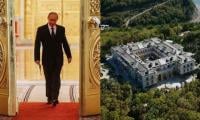A second wave, a second tightening and a further set of woes. For Pakistan, battling the biggest public health crisis of the 21st Century presents a daunting set of unprecedented challenges.
As the government gears up to tighten controls on marriage events across Pakistan, there’s far more at stake than just the colorful mid-winter ceremonies.
In the midst of the crisis, Prime Minister Imran Khan’s pretense of a return to normal stands dangerously removed from reality. In sharp contrast, Pakistan’s political and economic outlook remains in considerable disarray and the capacity of its ruling structure to manage the crisis is increasingly in doubt.
There are three equally significant challenges that have come to haunt Pakistan at this critical juncture in its history. More than two years after Khan’s arrival for his maiden tenure in Islamabad, his promise of laying the foundation for a qualitatively improved country is waiting to be delivered.
First, the crisis of governance and the disarray surrounding Pakistan’s civil institutions has deepened in the two years since Khan’s arrival. This was already a significant challenge even before the present government took charge, following years of neglect and failure to undertake remedial measures under successive regimes.
In previous governments however, there were two differences on this front. On the one hand, individuals credited with decisive action compensated for part of the malaise notably across the populous Punjab province. Unlike Chief Minister Usman Buzdar’s administration which appears to be constantly running behind the prevailing challenges instead of being ahead, the former government of Shahbaz Sharif as chief minister was widely credited for taking decisive and timely action.
Even though the malaise expanded across the Punjab like the rest of Pakistan, notably following the ill fated devolution exercises under former president Pervez Musharraf, Sharif stepped in different areas to lead with decisive action.
On the other hand, there is a palpable sense of a continuing slide across the Punjab as the opposition gears up to intensify its fight against Khan and his ruling Pakistan Tehreek-e-Insaf (PTI). Though the final consequence of the opposition’s onslaught is hard to predict, the same is true of predicting the PTI’s ability to hold the Punjab indefinitely. A failure to tackle daily life challenges mostly in the area of food security and food inflation, has already unleashed popular frustration at the grassroots across rural and urban Punjab.
Second, Khan’s promise of delivering a government which lays the foundation for a system of justice across Pakistan, appears to have so far failed. Delivering justice was indeed the most visible rallying cry of the PTI as it launched its election campaign in 2018. But across the grassroots of the country, anecdotal evidence suggests growing popular anxiety over a still absent change to support a system of improved justice. For ordinary households, life in today’s Pakistan presents more challenges than two years ago, especially given the popular outcry over inflation. Even though, the prime minister has presided over widely publicized meetings to address this very issue, change for the better is yet to be witnessed.
Finally, as Pakistan’s outlook shrinks under the weight of the fallout from the Covid-19 pandemic, reviving the economy in a credible way remains a challenge. High profile official messages talking up emerging hope in itself is not a solution. The official message has been driven by assessments that claim to eye increasing stability surrounding Pakistan’s economy.
Tragically, however, nothing could be further from the truth. As witnessed in relation to past controversial claims over an economic upturn, today’s Pakistan presents a similar picture. Unless stabilization can be all inclusive for a broad segment of society, such claims come at the risk of being no more than a repeat of meaningless pipe dreams. For Khan and other PTI leaders, complacency can be dangerous. Unless members of the ruling structure gear up soon to tackle the growing malaise across Pakistan, the future may not be different from the fate of increasingly unpopular governments in the past.
The opposition’s gatherings today may not immediately endanger the future of the ruling structure. But going forward, a build up against the government is likely unless Khan and his team can rise to tackle what matters the most to ordinary Pakistanis. And the ruling structure is already close to the mid line of its five year tenure.
In politics, time passes unnoticed and the next elections of 2023 may arrive sooner than imagined. The government’s fortunes now hinge on change, change and change that inspires mainstream Pakistanis to accept that their lives are heading for a qualitatively improved future.
In an interview with a private TV channel on Friday, the senator said, “Making independent members senators is a...
All the lawyers requested that the court seek decisions from the AG regarding the release of these 20 individuals
Rehman emphasized that restoration and adherence to Constitution would encompass democracy within political parties,...
Court after hearing the matter for more than three hours, telecasted live, sought replies from the federal government...
Khyber Pakhtunkhwa Chief Minister Ali Amin Gandapur. —Radio PakistanISLAMABAD. All the witnesses have been...
Former prime minister, MNA Raja Pervez Ashraf speaking on the occasion of World Press Freedom Day at the National...







